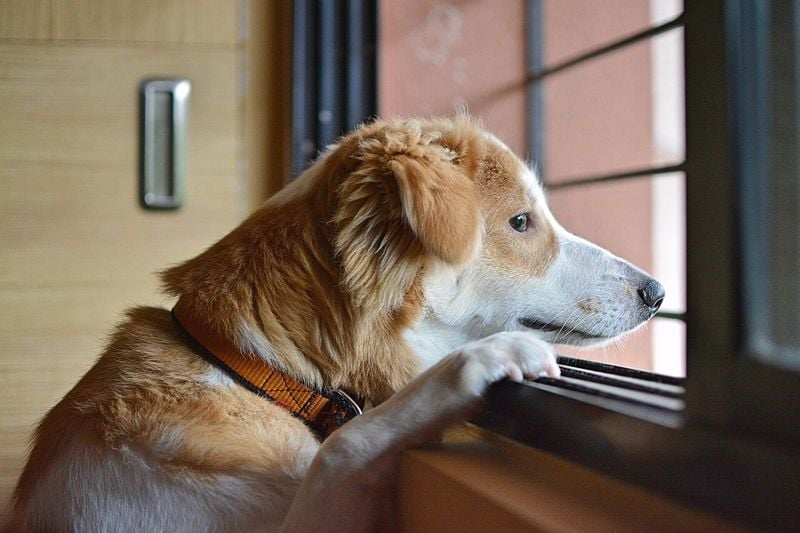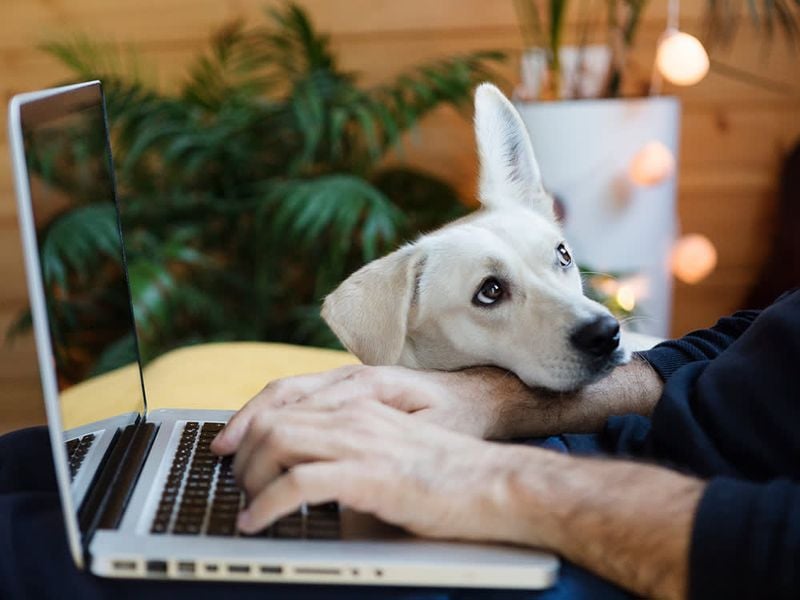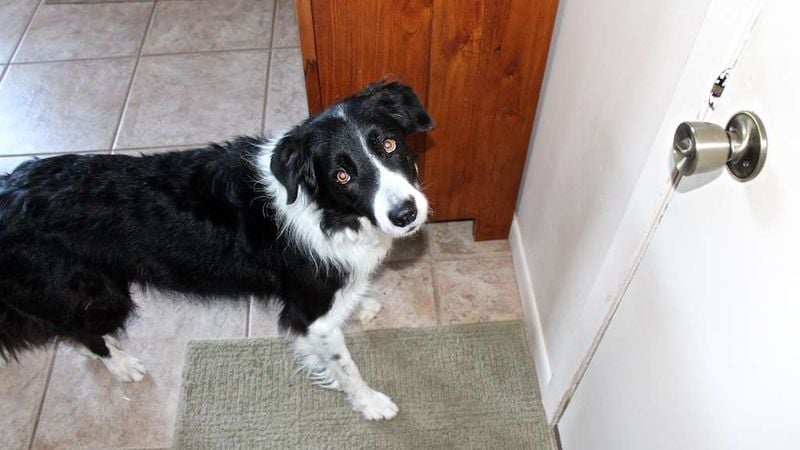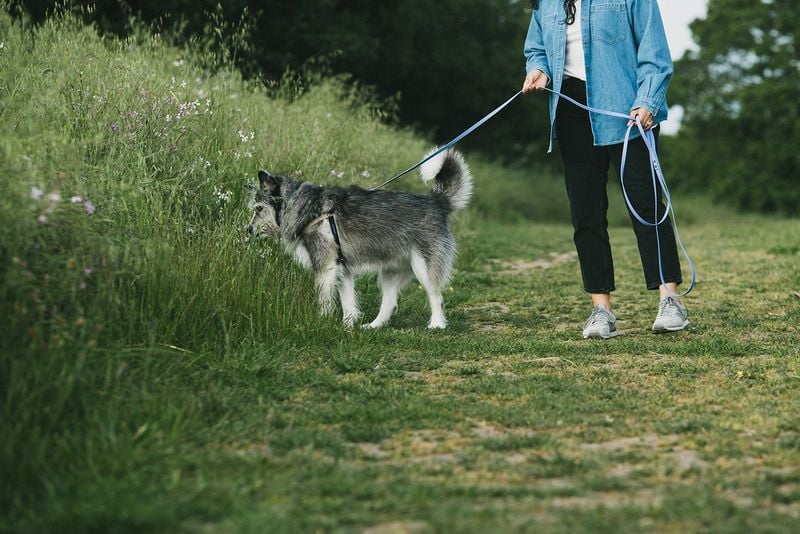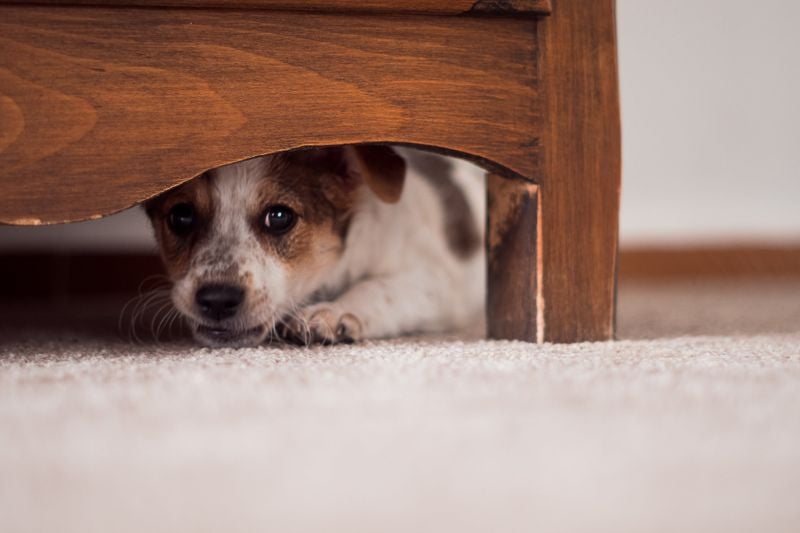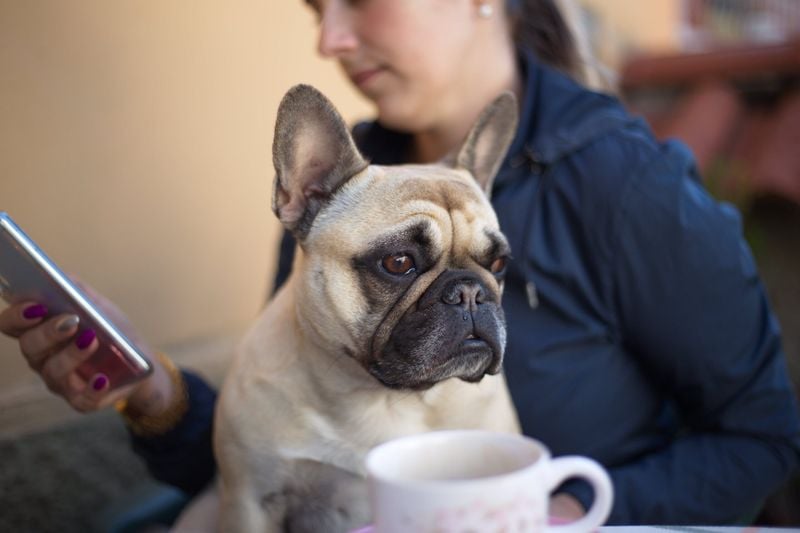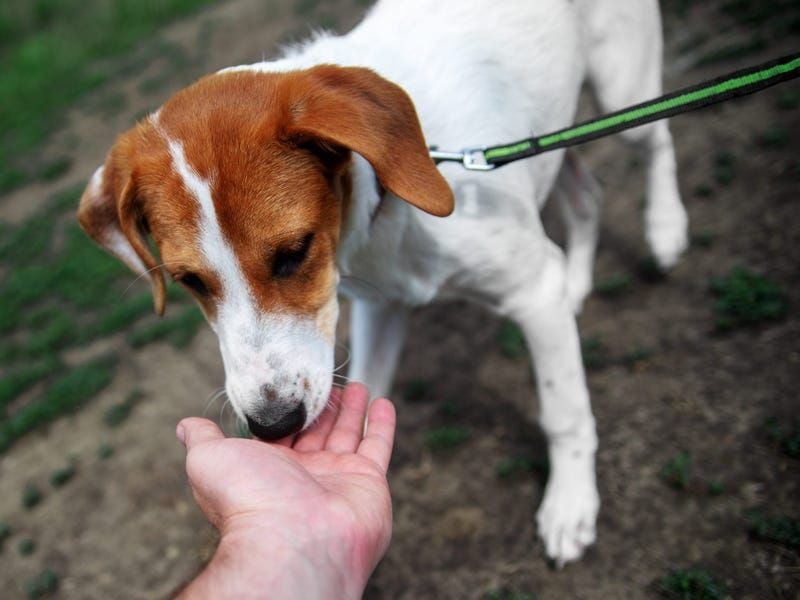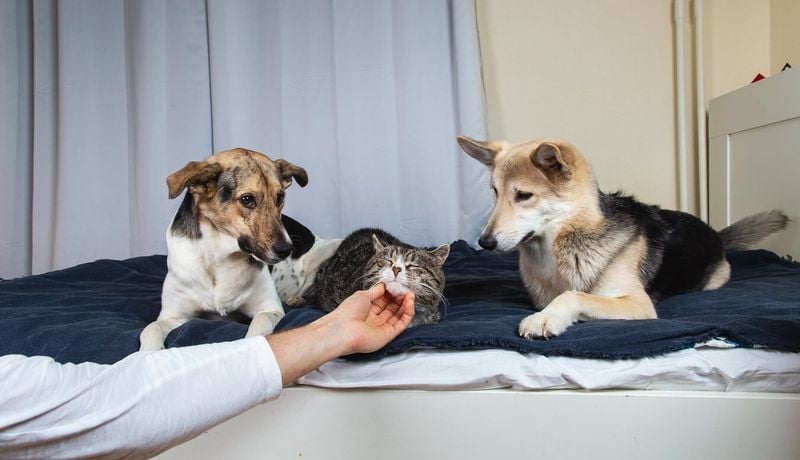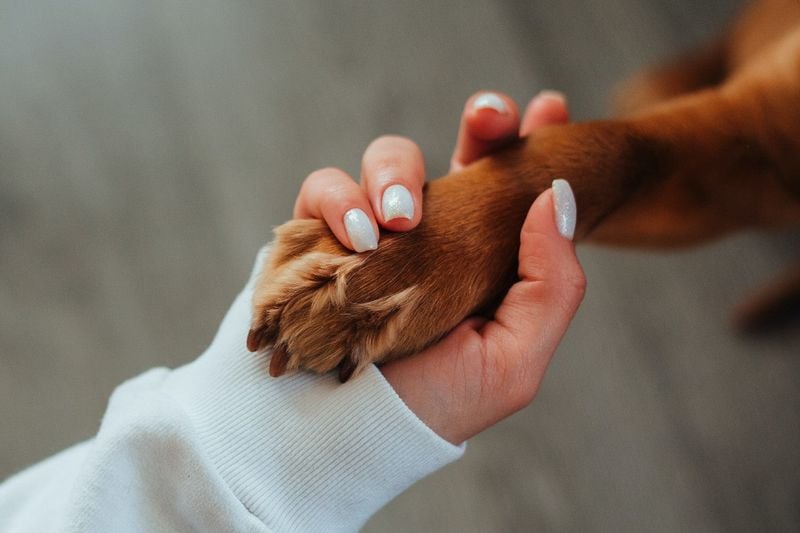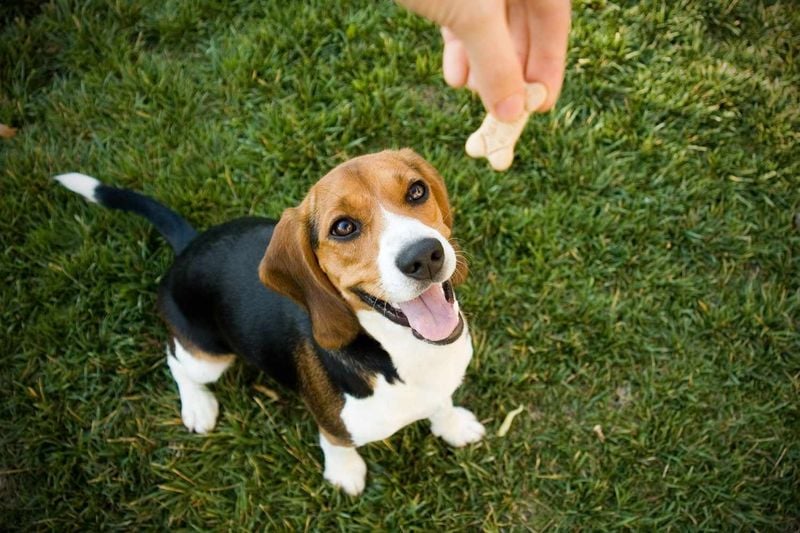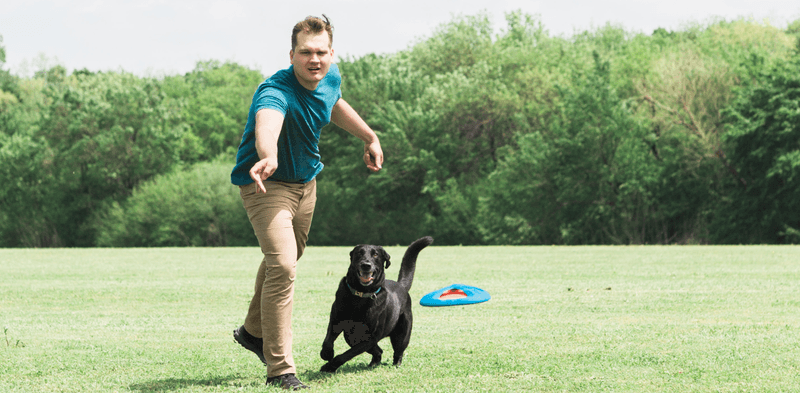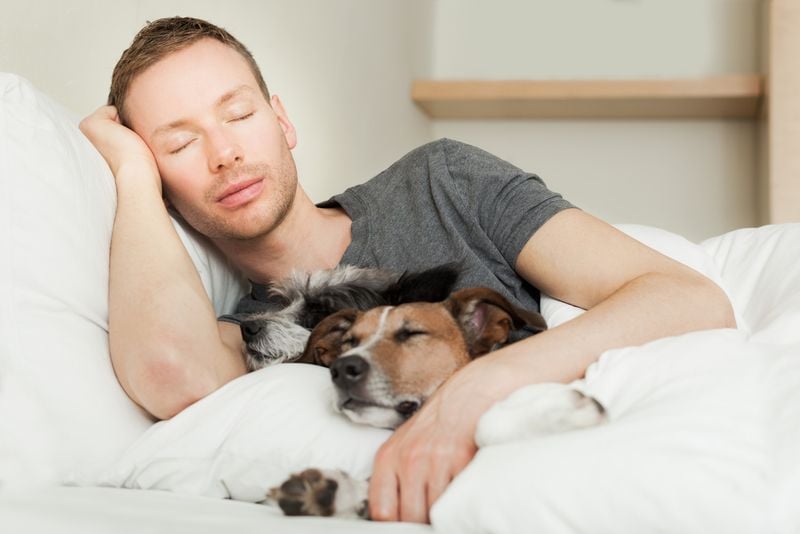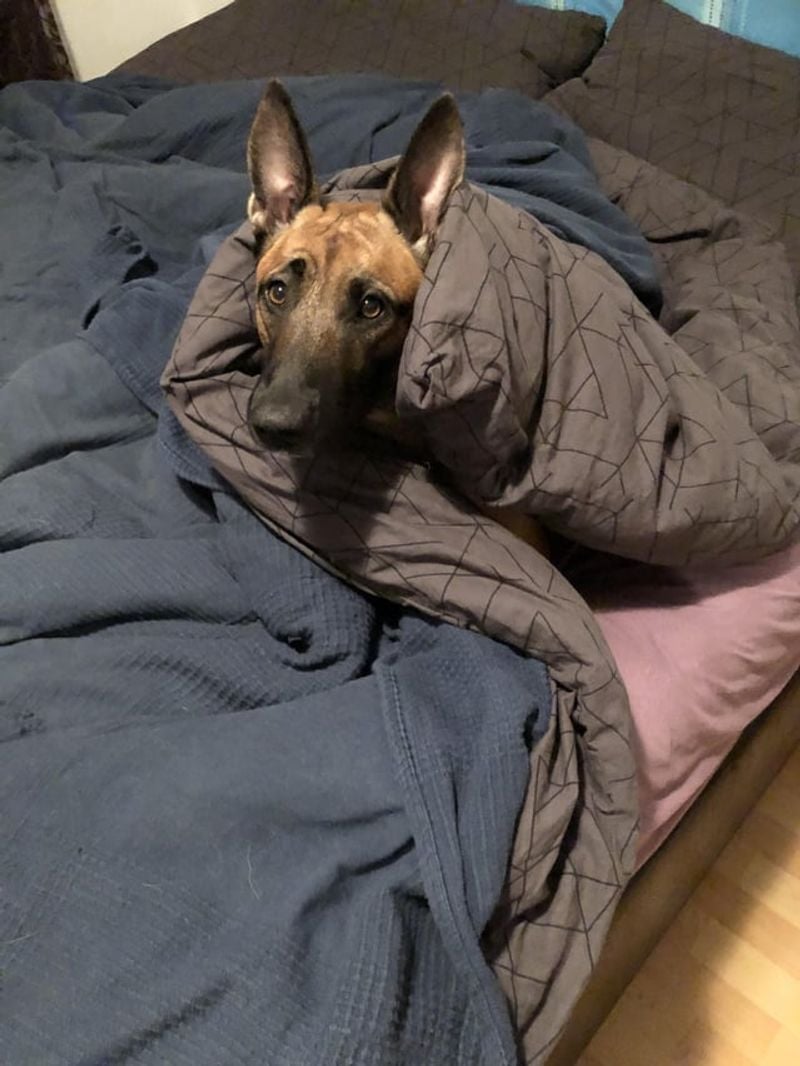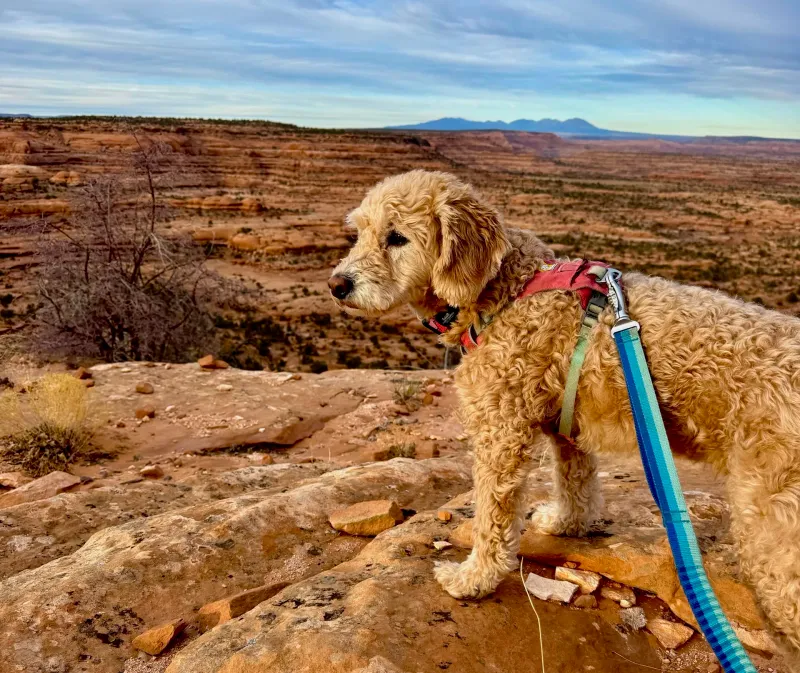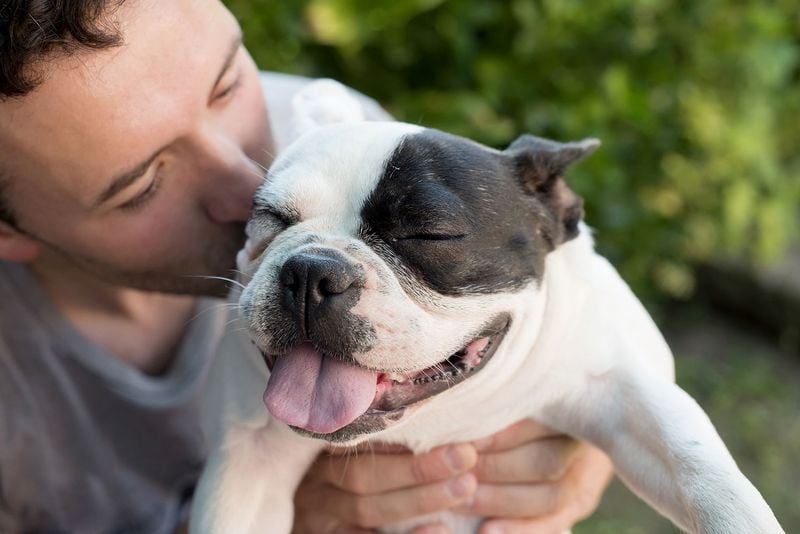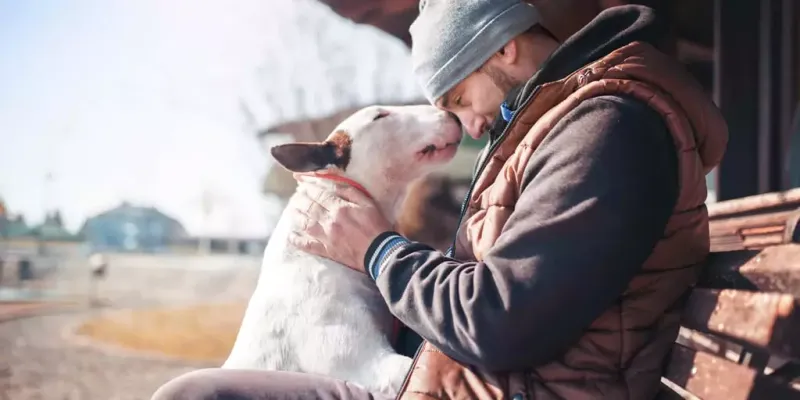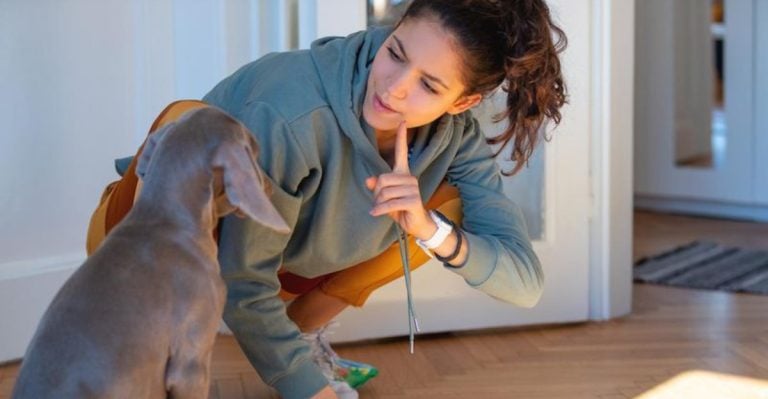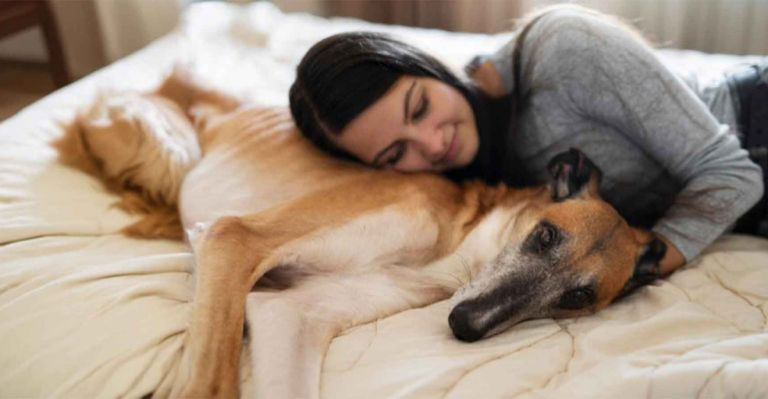16 Things You Do That Accidentally Hurt Your Dog’s Feelings (And 12 That Build Trust)
Your dog may not speak your language, but they’re always listening—and feeling. From your tone of voice to the way you walk out the door, even small actions can have a big emotional impact.
Many loving dog owners accidentally hurt their pets’ feelings without even realizing it. It’s not about cruelty—it’s about misunderstanding what your dog needs from you emotionally.
But the good news? You can build that trust back. Simple daily actions can tell your dog, “I see you. I hear you. You matter.”
Here are 16 things you might be doing that chip away at your dog’s emotional well-being—plus 12 heartwarming habits that build trust.
1. Yelling or Using a Harsh Tone
Did you know dogs can sense your emotions through your voice? Even if they don’t grasp the words, the anger or harshness in your tone is unmistakable to them. This can make them feel anxious or frightened, harming their trust in you.
Imagine being yelled at in a language you don’t fully understand; it’s confusing and unsettling. Dogs need gentle guidance and reassurance, not loud reprimands.
By softening your voice and offering calm instruction, you’re not only easing their stress but also fortifying your bond. Treat your dog with the kindness they inherently offer you, and watch as their confidence in you grows.
2. Leaving Without Saying Goodbye
Ever rushed out the door without a second glance at your furry friend? Dogs can develop separation anxiety when their humans leave abruptly, feeling abandoned and confused. A simple goodbye can provide the reassurance they need.
Imagine waiting eagerly for a loved one who suddenly disappears without explanation. The sudden absence can be distressing for them.
Taking a moment to offer a calm farewell helps ease their anxiety and sets a positive tone for your return. Enrich your dog’s environment with toys or comforting scents to keep them content until you come back. Small gestures can significantly enhance their emotional security.
3. Punishing Them After the Fact
Dogs live in the moment and may not connect past actions to current punishments. Scolding them long after the fact can only associate your anger with their present state.
Picture being reprimanded for something you can’t recall doing; it’s perplexing and unjust. Instead, focus on positive reinforcement and timely corrections to guide their behavior.
Redirect them when you catch them in the act, offering praise when they choose correctly. This approach not only fosters understanding but also strengthens your relationship. Remember, your dog desires to please you; they just need timely feedback to know how. Treat mistakes as learning opportunities.
4. Ignoring Their Attempts to Get Attention
Dogs often seek our attention with a nudge or a whine, and when these gestures are overlooked, they can feel unwanted. Imagine reaching out to someone only to be disregarded repeatedly.
This can lead to feelings of neglect and even behavioral issues in dogs. Being attentive to their needs doesn’t always require a lot of time. Sometimes a simple pat or a few minutes of play can reassure them of their importance in your life.
Show them they matter by acknowledging their presence. Such small, consistent gestures build a foundation of trust and affection, which is vital for their emotional well-being.
5. Changing Routines Suddenly
Dogs thrive on predictability; sudden changes in routines can be distressing for them. Imagine waking up one day to find your schedule turned upside down. This can leave your dog feeling insecure and anxious.
A consistent routine helps them understand what to expect, which in turn provides comfort and security. It’s crucial to introduce changes gradually, allowing them time to adjust.
By incorporating new elements slowly, such as meal times or walk schedules, you maintain their trust and reduce stress. Consistency is key to a happy, well-adjusted dog. Keep their world steady, and they’ll reward you with unwavering loyalty.
6. Skipping Walks or Playtime
For many dogs, walks and playtime are the highlights of their day. When these moments are skipped, it can lead to feelings of disappointment and restlessness. Picture waiting eagerly for a special outing that never happens.
Exercise isn’t just physical; it’s mental stimulation and bonding time. Regular walks and play sessions are opportunities for them to explore and connect with you.
Neglecting these activities can lead to behavioral issues and emotional strain. Prioritizing this time shows your dog they are valued and loved. Invest in their happiness by ensuring they get the exercise and attention they crave and deserve.
7. Forcing Interactions With Strangers or Dogs
If your dog is naturally shy or reserved, forcing them into social situations can feel overwhelming—akin to being pushed into a crowded room of strangers without warning.
This not only heightens their stress but can also damage their trust in you as their protector. It’s crucial to respect their comfort levels and introduce new friends gradually.
Allowing your dog to observe and approach at their own pace builds confidence and security. Recognize their individuality and need for space, which in turn fosters a trusting relationship. Celebrate small social victories and always prioritize their emotional comfort over social expectations.
8. Not Letting Them Sniff on Walks
For dogs, sniffing is akin to checking emails—it’s their way of reading the environment and gathering information. Denying them this natural behavior is like turning off their access to the world.
Imagine being hurried through a museum without time to look at the exhibits. By allowing your dog to sniff during walks, you’re enriching their experience and satisfying their innate curiosity.
This simple act of patience can reduce their stress and increase their happiness. Remember, a walk is as much about exploration as it is about exercise. Let your dog enjoy their stroll, and you’ll both reap the benefits of a more balanced outing.
9. Laughing at Their Fears
Dogs have fears and phobias, just like humans. Laughing at their fear, such as during fireworks, can feel invalidating. Imagine expressing a fear only to be met with amusement; it can be deeply unsettling.
Instead of laughter, offer comfort and reassurance to help them cope. This approach not only calms them but strengthens your bond as their protector.
Providing a safe space during stressful times demonstrates empathy and understanding. By acknowledging their fears, you show respect for their feelings, enhancing their trust in you. Remember, your response to their fear can either alleviate or exacerbate it. Choose compassion over amusement.
10. Petting Them When They Want Space
Everyone needs personal space, and dogs are no exception. When they seek solitude, yet are met with unwanted petting, it can make them feel trapped.
Think of it as being hugged when you desire solitude; it can be overwhelming. Respecting their boundaries shows you value their comfort and emotions.
Observe their body language and respond appropriately, allowing them to approach you when ready. This respect for their autonomy enhances trust and comfort in your relationship. Recognize their signals for space and honor them with patience. An environment that respects boundaries nurtures a secure and confident pet.
11. Being on Your Phone Too Much Around Them
Dogs are perceptive creatures and can sense when your focus is divided, especially if it’s due to a phone or screen. Imagine spending time with someone who is constantly distracted; it feels dismissive.
By being present and engaging with your dog, you affirm their importance in your life. This attention fosters a deep bond of trust and affection.
Set aside tech-free time to connect, whether it’s during a walk or a quiet evening at home. These moments matter more to your dog than you might realize. A shared focus cultivates a stronger emotional connection, enhancing your mutual trust and happiness.
12. Punishing Accidents During Illness or Aging
As dogs age or experience illness, they may have accidents they can’t control. Punishing them only adds to their confusion and shame.
Imagine being chastised for something you physically can’t help; it’s disheartening and unfair. Instead, approach these situations with empathy and understanding.
Provide them with comfort and seek solutions, like protective gear or more frequent outings. Your compassion during their vulnerable times strengthens their trust in your care. By choosing kindness over frustration, you affirm your role as a supportive companion. Remember, they deserve patience and love, especially when navigating the challenges of age or illness.
13. Leaving Them in Isolation Too Long
Prolonged isolation can be emotionally damaging to dogs, who are inherently social beings. Picture yourself in solitary confinement, yearning for connection.
When left alone too long, dogs can develop anxiety and exhibit destructive behaviors. Prioritize their social needs by ensuring they have company, whether it’s human interaction or another pet.
Enrich their environment with engaging toys and soothing sounds to alleviate loneliness. These efforts demonstrate your commitment to their emotional well-being. By minimizing their isolation, you cultivate a happier, more balanced pet. Invest time in their company, and you’ll be rewarded with a loyal, content companion.
14. Mocking Their Appearance or Behavior
Dogs, though unable to understand words, are sensitive to tone and energy. Mocking their appearance or behavior, even playfully, can convey negativity.
Imagine being the butt of a joke you don’t understand; it can feel alienating. Instead, celebrate their uniqueness and quirks with affection and positivity.
Recognize that those little oddities are part of what makes them special. By nurturing their individuality, you reinforce their confidence and trust in you. Embrace their imperfections with love, and you’ll deepen your bond. Remember, your energy speaks volumes, so choose kindness and acceptance in every interaction with your furry friend.
15. Being Inconsistent With Training or Commands
Consistency is crucial in dog training; mixed signals create anxiety and disappointment. Imagine being given conflicting instructions—it breeds uncertainty.
Dogs thrive on clear, consistent communication, which helps them understand your expectations. Ensure everyone in the household is on the same page with commands and training methods.
By providing a consistent approach, you build a secure environment where your dog can confidently learn and grow. This consistency not only aids in training but also strengthens your relationship. Remember, clarity fosters success and happiness in your dog’s life. Lead with intention, and watch as your dog responds with trust and enthusiasm.
16. Favoring Another Pet Too Obviously
Dogs are attentive and can sense when they’re not the favorite. Displaying favoritism can lead to feelings of jealousy and insecurity. Imagine always being second best despite your efforts to please.
It’s important to balance attention and affection among all pets in the household. Celebrate each pet’s unique traits and offer them individual moments of love and care.
By ensuring fairness, you maintain harmony and trust among your pets. Recognize and appreciate the different ways each pet contributes to your life. This approach fosters a home where every pet feels valued and loved, enhancing their emotional well-being.
17. Respecting Their Body Language and Boundaries
While it’s easy to slip into habits that hurt your dog’s feelings, the good news is there are just as many ways to show them love and build lasting trust.
Understanding and respecting a dog’s body language is crucial in building trust. Seeing a dog retreat and giving them space acknowledges their comfort level.
This practice shows you are attentive to their needs and reinforces their safety around you. It’s like respecting personal space in a relationship; it builds mutual respect.
By honoring their signals, you create an environment of trust and security. This understanding strengthens your bond and makes your dog feel valued. Recognize their cues and respond with empathy, ensuring they feel safe and respected. A relationship rooted in mutual understanding is the foundation of unwavering trust and loyalty.
18. Keeping a Consistent Routine
Maintaining a consistent routine provides dogs with a sense of security and predictability. Imagine the comfort of knowing exactly what to expect each day.
This consistency ensures they feel safe and grounded, reducing anxiety and promoting well-being. By sticking to regular feeding, walking, and play times, you affirm their importance in your life.
A structured routine builds trust, as your dog understands they can rely on you. This reliability translates to a more content and well-adjusted pet. Consistency is a simple yet powerful way to show your love and commitment, nurturing a harmonious and trusting relationship.
19. Offering Positive Reinforcement
Positive reinforcement is a powerful tool in building trust and shaping behavior. Imagine receiving praise and rewards for a job well done; it motivates and boosts confidence.
Offering treats, praise, and play strengthens your bond far more than punishment. It’s an affirmation of your dog’s good behavior and efforts to please you.
By focusing on the positive, you nurture a confident and trusting pet. This approach not only encourages desired behaviors but also enhances your relationship. Recognize and celebrate their accomplishments, and you’ll see your dog flourish with joy and assurance. Positive reinforcement builds a happier, more harmonious connection.
20. Engaging in Daily Play or Training Sessions
Daily play or training sessions are vital in building a strong relationship with your dog. These interactions show you value the bond and enjoy their company.
Imagine the joy of spending quality time with a loved one; it strengthens your connection. Regular engagement provides mental stimulation and emotional fulfillment for your dog.
These sessions are opportunities to teach, learn, and grow together. By dedicating time each day, you foster a deeper understanding and trust. This commitment to shared activities enriches both your lives, making your bond unbreakable. Celebrate the joy of play and learning, and watch your relationship thrive with happiness.
21. Speaking in a Gentle, Reassuring Voice
The tone of your voice communicates volumes to your dog, often more than words. A gentle, reassuring voice conveys love and safety, much like a comforting embrace.
Imagine being soothed by a calming presence during times of uncertainty; it’s deeply reassuring. By speaking softly, you create an environment of trust and calm.
This approach helps your dog feel secure and valued, strengthening your connection. Choose your words and tone with care, always reinforcing a sense of peace and assurance. A kind voice is a powerful tool in nurturing a trusting relationship, making your dog feel cherished and understood.
22. Letting Them Sleep Close to You (When Appropriate)
Allowing your dog to sleep close, when appropriate, can significantly enhance trust and security. It mirrors the closeness of a pack, providing comfort and belonging.
Imagine the peace of resting beside someone you trust completely; it fosters connection. This shared space strengthens your bond, creating a sense of unity and safety.
Establish boundaries and ensure it’s mutually comfortable, respecting each other’s needs. By inviting them to share this intimate space, you affirm their place in your life. This closeness reinforces trust and affection, nurturing a relationship built on mutual respect and companionship.
23. Offering Comfort When They’re Scared
When dogs are scared, such as during storms or loud noises, offering comfort is crucial. Imagine facing your fears alone versus with a supportive friend; the difference is immense.
By sitting with them, you show your dog they are not alone, building a protective bond. This support reassures them during stressful times, enhancing their trust in you.
Create a safe space where they can retreat, offering gentle words and presence. Your role as their protector is reinforced through empathy and understanding. Comfort their fears, and you’ll deepen your relationship, ensuring they feel secure and cherished in your care.
24. Giving Them Freedom to Explore Safely
Controlled freedom to explore allows dogs to satisfy their curiosity while knowing they are safe. Think of it as venturing out with a safety net; it builds confidence and independence.
Allowing your dog to sniff and roam under supervision shows trust goes both ways. This freedom enriches their world, providing mental stimulation and happiness.
By offering safe exploration, you nurture their adventurous spirit and strengthen your bond. Encourage their curiosity with boundaries, ensuring they feel secure under your watchful eye. This balance of freedom and safety cultivates a trusting, fulfilling relationship with your pet.
25. Rewarding Eye Contact and Affection
Eye contact and affection are powerful tools in building a connection with your dog. Imagine the reassurance of a warm gaze and gentle touch; it speaks volumes of love.
Rewarding these interactions deepens your bond, showing your dog they are valued. This mutual affection fosters a sense of security and trust in your relationship.
Celebrate these moments with praise and gentle pets, reinforcing positive feelings. By cherishing these interactions, you create a nurturing environment for your dog. Eye contact and affection cement your bond, ensuring your dog feels cherished and important in your life.
26. Touching Them Calmly and Lovingly
Calm, loving touch communicates care and affection, strengthening your bond with your dog. Imagine the comfort of a soothing hand; it conveys security and warmth.
Regular, gentle petting builds emotional closeness, showing your dog they are cherished. This touch reassures them of your love and commitment to their well-being.
Make these moments intentional, focusing on their responses and comfort. By touching them with care, you create a positive, trusting relationship. Nourish their spirit with affection, ensuring they feel safe and valued. A calm, loving touch is a simple yet profound way to deepen your connection.
27. Letting Them Make Choices Sometimes
Giving your dog the opportunity to make choices builds confidence and respect. Think of the freedom in making decisions; it empowers and enhances self-esteem.
Allowing them to choose a walk path or toy shows you trust their instincts. This autonomy strengthens your bond, fostering mutual respect between you and your dog.
By valuing their choices, you affirm their individuality and encourage their independence. Celebrate their decisions with enthusiasm, reinforcing their confidence. Offering choices is a powerful way to build a trusting relationship, ensuring your dog feels understood and appreciated. Empower them with options, and watch your bond flourish.
28. Being Emotionally Present With Them
Dogs know when you’re truly present with them, cherishing those moments of undivided attention. Imagine the joy of being someone’s sole focus; it’s deeply validating.
By being emotionally present, you affirm their importance and strengthen your connection. These shared experiences nurture trust and happiness in your relationship.
Put aside distractions and immerse yourself in activities with your dog. Whether it’s a walk or quiet time together, your presence matters more than you realize. Embracing these moments reinforces your bond, ensuring your dog feels loved and appreciated. Emotional presence is the cornerstone of a fulfilling, trust-based relationship.


